The torso in the Thames: A 20-year mystery
- Published

It's the longest unsolved child murder case in the recent history of the Metropolitan Police. Twenty years ago, a young African boy was murdered in a brutal ritual, his head and limbs removed, and his torso dumped in the Thames.
On Tuesday the Met Police made a renewed appeal for members of the public to "be bold" and come forward with any information that may help them solve this case.
The boy's identity has remained a mystery - he was known simply as "Adam", a name given to him by detectives.
Over the years, there have been arrests and forensic breakthroughs. But no-one has been charged with his killing.
We have followed the case from the very beginning, even travelling to the place where it's thought the boy may have been born, in an effort to find out what really happened.
Twenty years on, we've been talking to the people closest to the case. Some, speaking for the very first time.
And we have visited Adam's unmarked grave in a sprawling cemetery in south London.
21 September 2001: The discovery
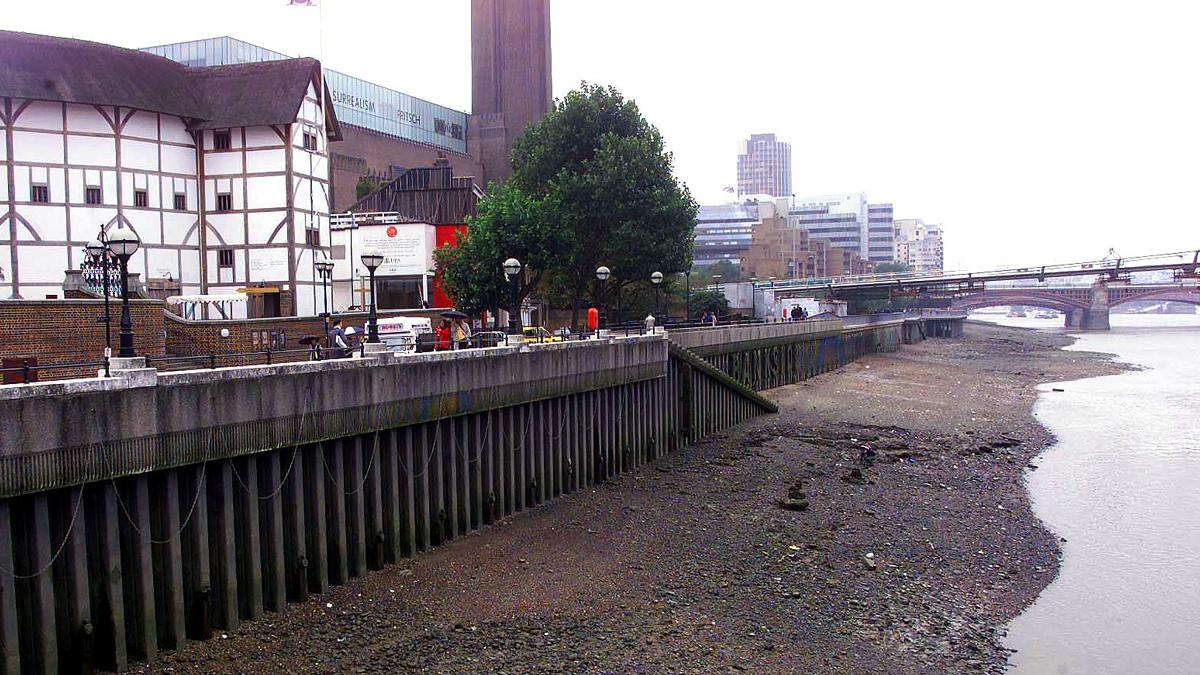
The body was found in the Thames near the Globe Theatre
It was a passer-by who found the body.
Aidan Minter was walking across Tower Bridge in central London heading for a business meeting.
It was just 10 days after the 9/11 attacks in the US and the city was still strangely quiet.
"The tide was quite high at the time, I thought it was a tailor's mannequin," Aidan recalls. He rarely speaks about the case. "Then it came under the bridge, and that's when I saw the detail - the wounds and the body itself."
Police pulled the body from the water - upstream - close to the Globe Theatre.
It's a memory Aidan lives with to this day. "I do think about him. I'll never forget it for as long as I live."
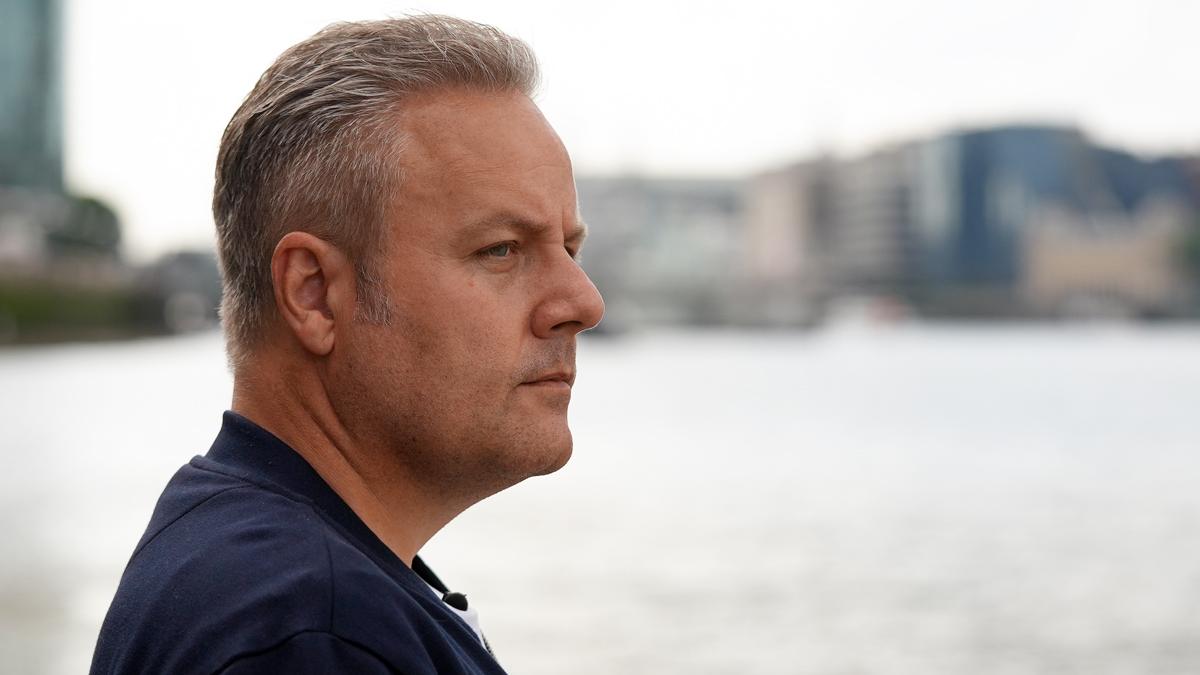
Aidan Minter (pictured in 2021) found the boy's torso in the River Thames
The first week
The boy, who was black, may have been in the water for up to 10 days. He had died from having his throat slit. His arms, legs and head had all been expertly amputated. They have never been found.
There were no signs of physical or sexual abuse, and he had been well fed. On the body there was nothing but a pair of orange shorts - something which later gave officers their first breakthrough in the case. The label was "Kids & Company" and the size and colour could only be found in a small number of shops in Germany.
Nick Chalmers, then a detective sergeant, was one of the police officers assigned to the case - the strangest and most complex of his career.

Retired detective Nick Chalmers (pictured in 2021)
"You definitely have a tie to a case, and there's this drive to find answers. The one thing that has lingered over 20 years is the frustration that we didn't find all the answers," he says. He has an encyclopaedic knowledge of the case, and keeps copies of many of the case files at home
Nearly a week after the body was found, detectives appealed for help from the public on the BBC's Crimewatch UK programme. About 60 people called in, but there was no breakthrough.
African connections
Detectives took the unprecedented step of giving the boy a name, and a reward of £50,000 was offered for information leading to a murder conviction.
Tests showed that Adam had been aged between four and seven years old and had lived in Africa until shortly before his death. Traces of cough syrup were also found in his stomach. If he had been unwell, had those who killed him been concerned enough to give him medicine? Or did they use it to make him drowsy before the murder?
Experts agreed that - because Adam's body had been expertly butchered - it had been a ritualistic murder. Some thought it had been one of the rare so-called "muti" killings found in southern Africa - when a victim's body parts are removed and used by witchdoctors as "medicine" for a client who wants, for example, to win a business deal or secure good luck.
Other experts believed it was more likely a human sacrifice with its origins in a twisted version of Yoruban belief systems from Nigeria. A perverted offering to the goddess Oshun - a deity typically associated with water and fertility. Subsequent forensic evidence gave more credence to that theory.
April 2002: Mandela's plea
In April 2002, the police team travelled to South Africa to meet the country's former president Nelson Mandela. He appealed across the continent for Adam's family to come forward:
"Scotland Yard informs me that early indications of their investigations are that the boy comes from somewhere in Africa, so if anywhere, even in the remotest village of our continent, there is a family missing a son of that age who might have disappeared around that time... please contact the police."
July 2002: Breakthrough
In July 2002, social workers in Glasgow became worried about the safety of two girls. They were living with their mother, an African woman in her early 30s.
Council workers found bizarre, ritualistic objects in her home. At a court hearing to take the children into care, the woman - Joyce Osagiede - told a story of cults, killings and of sacrifices.
An observant police officer thought it odd enough to warrant a call to the homicide unit in London.
DS Nick Chalmers searched Joyce's home and found clothes with the same "Kids & Company" label and in the same sizes as Adam's orange shorts. Joyce was arrested.
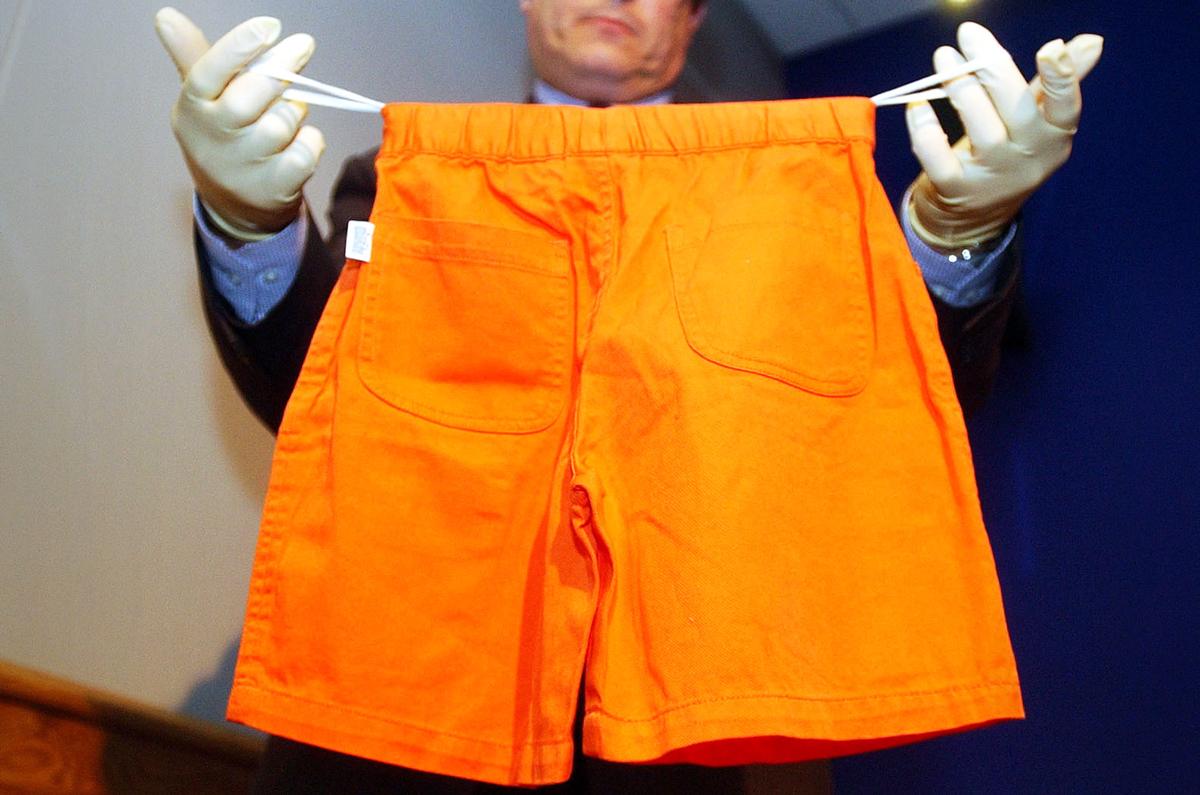
Police displayed a pair of shorts similar to those found on Adam's torso
Officers were convinced she was an important part of the story, but she was confused and kept changing her account. She said she knew nothing about Adam, but was unable to explain the extraordinary coincidence about the clothes.
Officers weren't able to charge Joyce. She remained in Glasgow waiting for the results of her asylum claim.
September 2002: Nigerian links
In September 2002, a year after Adam was found, a memorial service was held in London's City Hall to celebrate his life. It was attended by about 30 police officers, scientists, pathologists and various experts involved in the case.
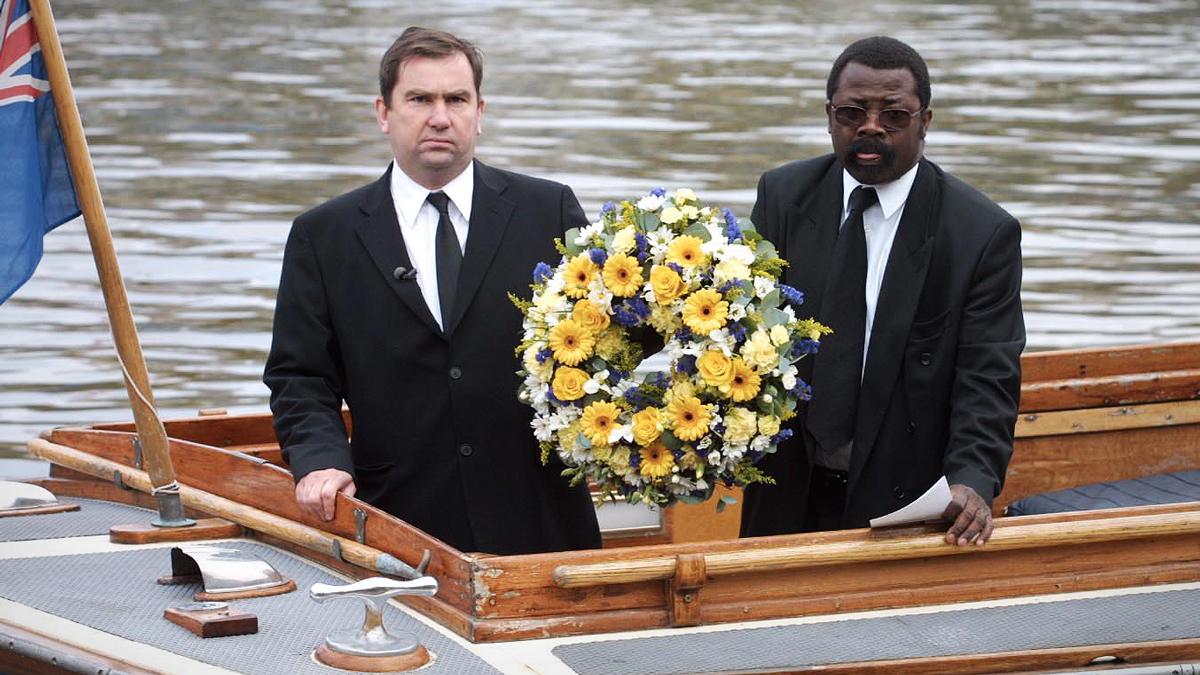
A wreath was placed in the Thames in memory of Adam, September 2002
"Probably the closest thing [Adam] had to a family were the people who knew him because of the investigation," says Nick Chalmers.
Forensic work continued, and by December it was clear Adam's DNA pointed to West African ancestry. Ground breaking tests on samples of bone narrowed down Adam's birthplace to a strip of land around Benin City in southern Nigeria - Joyce Osagiede's home city.
In 2002 the Crimewatch team investigated the case. At the time it was believed Adam was Afro-Caribbean.
Pollen samples in his gut showed he had been living in the south-east of England for only a matter of days or weeks before his death.
Also in his stomach was an unusual substance made of African river clay - including vegetation, ground bone and traces of gold and quartz. The presence of ash showed the mixture had been burned before the child was forced to eat it - perhaps that explains the cough medicine, something sweet to wash down the unpleasant concoction?
November 2002: German connection
Joyce Osagiede - the woman who had been arrested in Glasgow but not charged - was deported after the Home Office rejected her asylum application.
Nick Chalmers and his boss Detective Inspector Will O'Reilly travelled with her to Nigeria on a specially chartered private jet. It was hoped she might open up on the flight and reveal crucial information about the murder. But she didn't. The detectives didn't get off the plane when they landed in Lagos, and flew straight home. Joyce then disappeared.
Shortly afterwards, German police revealed that Joyce had lived in Hamburg until late 2001 - the city where the orange shorts found on Adam's body were bought.
More arrests
In London in late 2002 there was what seemed like a major breakthrough.
When police arrested Ms Osagiede, they found that she only had two contacts in her phone - one was for a man called Mousa Kamara. He was traced to a house in London. There, officers found an animal skull pierced with a nail, liquid potions and small packets containing what appeared to be sand or earth. There was also a videotape labelled "rituals" - a drama in which an adult was beheaded. The items seemed to be associated with Nigerian rituals, known as Juju. Detectives also worked out that Mousa Kamara's real name was actually Kingsley Ojo. With nothing to link him directly to Adam's murder, he was released on bail.
But there was clear evidence Ojo was involved in human trafficking and so he was put under surveillance. Within hours of being released, he was back talking to his criminal associates organising the illegal entry of Nigerians to the UK. He was considered to be a major player in a gang smuggling people into the country.
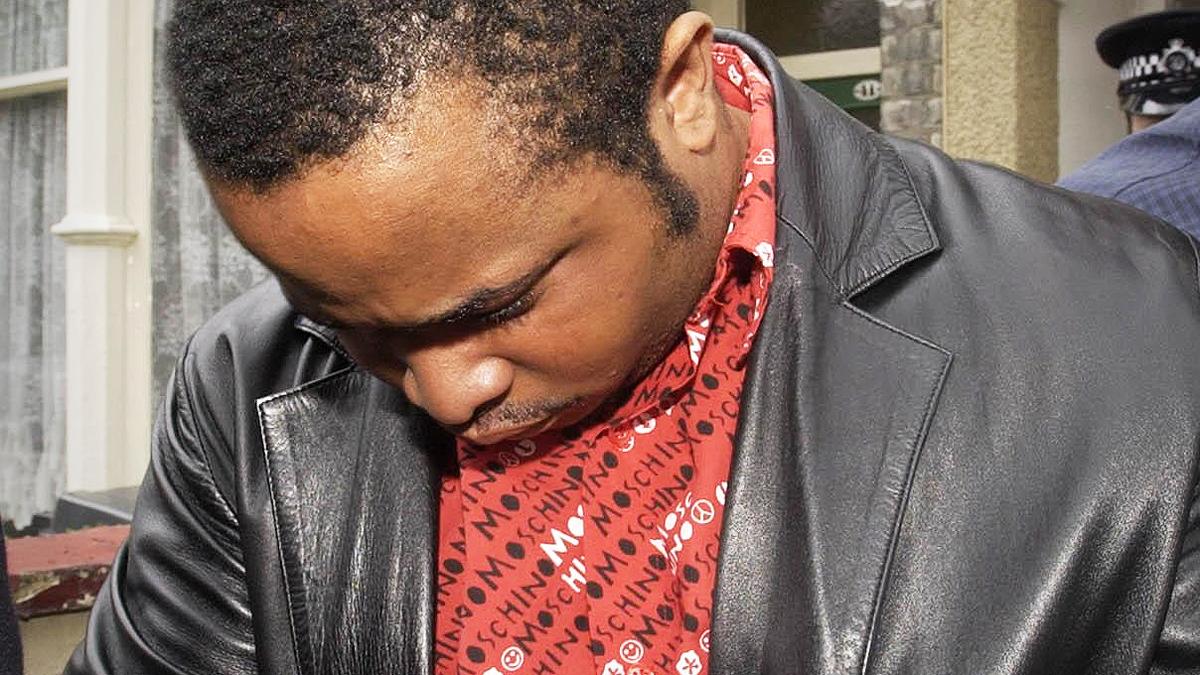
Kingsley Ojo arrested in Stratford, east London. in July 2003
In July 2003, after following his every move and identifying his criminal associates, 21 men and women were arrested in co-ordinated raids at nine addresses across London. That included Ojo.
October 2003: The Doomsday Plant
Botanists at Kew Gardens had been sent samples of plant remains found in Adam's gut. In October 2003, they came to a startling conclusion. Adam had been fed parts of two different plants. First, there were small amounts of the Calabar bean - sometimes known as the Doomsday or ordeal plant, traditionally used in witchcraft ceremonies in West Africa. At this dosage it causes paralysis, but doesn't prevent pain. Second, ground-up seeds from the Datura plant which acts as a sedative and causes hallucinations were discovered.
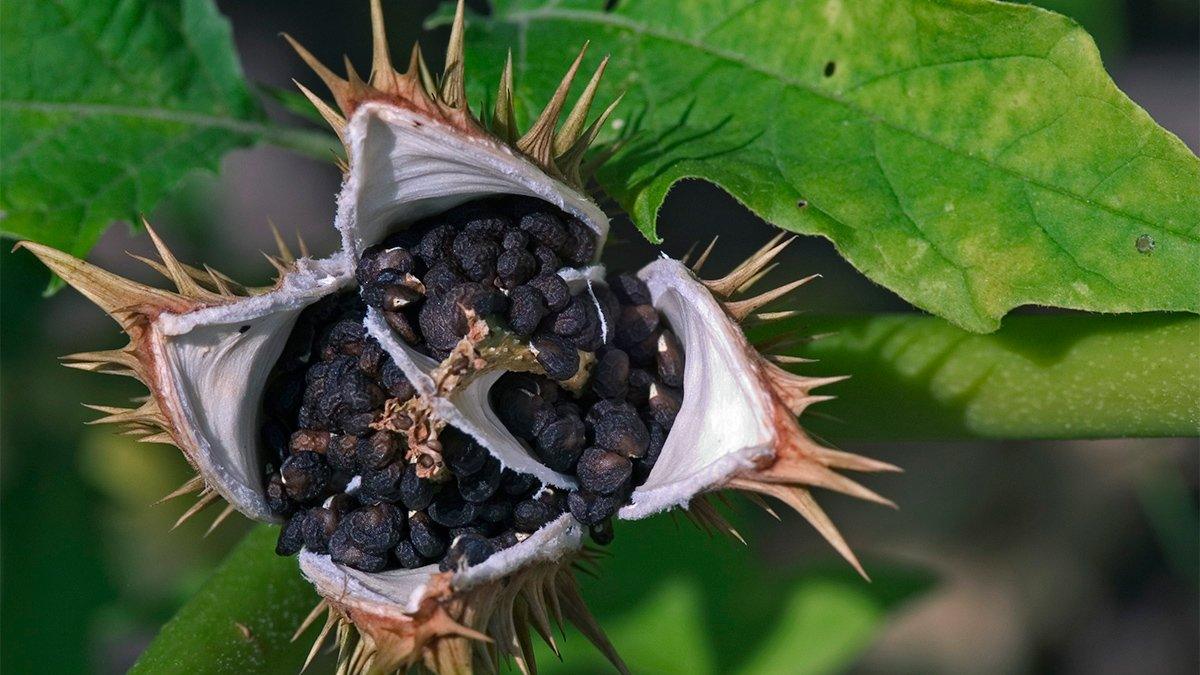
Datura seed capsule
Detectives believed the mixture was given to Adam before his throat was cut. It would have left him paralysed and helpless, but still aware of what was happening to him.
July 2004: Kingsley Ojo jailed
Police had enough evidence to charge Kingsley Ojo - not in connection with Adam's death, but with four charges of people smuggling and using fake documents to obtain a passport and driving licence. In July 2004, he pleaded guilty and was sentenced to four years in jail - with a recommendation he be deported upon release.
Ojo, who was also known by a number of aliases, had according to investigators headed a "substantial" network thought to have brought hundreds of people to the UK to work in the sex trade, as domestic slaves or for benefit fraud.
Detectives hoped Ojo would still hold the key to Adam's death.
We learned that in Brixton Prison, he gained a reputation for being a "big man". He is alleged to have performed Juju ceremonies for money on behalf of other prisoners, one inmate informed the police.
December 2004: Inquest
In December 2004, the inquest into Adam's death recorded a verdict of unlawful killing. It heard how he died from neck wounds suffered while he was still alive.
2005: Kingsley Ojo offers to help
From his prison cell Ojo contacted the team investigating Adam's death. He said he had secret recordings of Joyce Osagiede recorded in Nigeria by his associates. He claimed he wanted to help track down the killer and clear his own name.
Officers interviewed him at the end of his sentence, while he was waiting to be deported. He convinced the murder team he could help - and by late 2005 was released and living back in east London, apparently assisting the inquiry.
For more than two years, he fed the police information - at one point claiming that Ms Osagiede was on her way back to the UK. This proved not to be true.
He also accused a different woman of leading the sacrificial ceremony back in September 2001. Police placed an undercover officer in her church for months - but detectives would conclude that there was no basis for the claims.
In December 2006, Adam's body was laid to rest in an unmarked grave in a London cemetery.
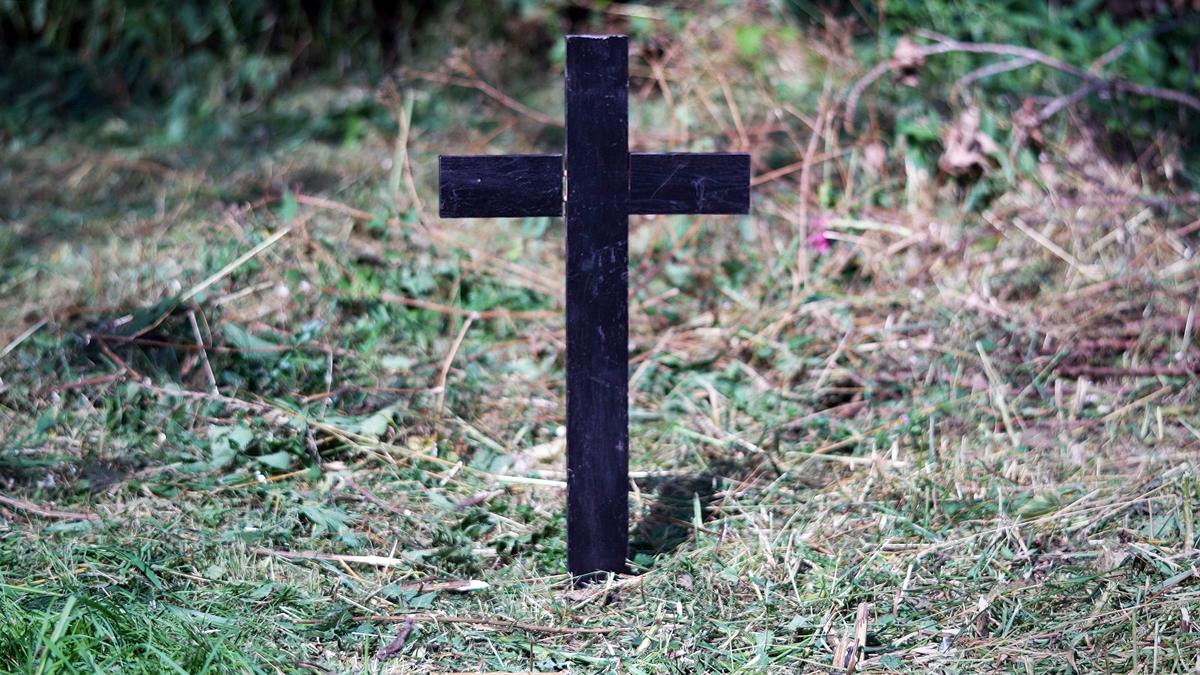
The non-denominational service was attended by a handful of police officers who had worked on the case from the start - including DS Nick Chalmers and Will O'Reilly, soon to be promoted to detective chief inspector.
2008: Kingsley Ojo deported back to Nigeria
Detectives concluded they couldn't rely on Kingsley Ojo - he was still believed to be using a false identity to commit benefit fraud even after his release from prison. In 2008, he was deported back to Nigeria.
Throughout his deportation hearing Ojo claimed that he had always "done his best" to assist the investigation.
Also in Nigeria, Joyce Osagiede reappeared and was interviewed by police. She finally admitted she had looked after "Adam" when she had lived in Hamburg in northern Germany - and had bought the orange shorts found on his body. But she said no more and vanished again.
After years of trying, we finally managed to track down a woman who actually knew Joyce in Germany. She's never spoken to the media before.
Ria Matthes, a social worker assessing benefit claims, met Joyce and her two girls on several occasions when they were in Hamburg. She also remembers seeing Joyce twice with a small boy in the summer of 2001 who she now realises may well have been Adam. Which would make her her one of the last people to see him alive.
Ria Matthes, a social worker in Hamburg, met Joyce and saw her with a young boy who may have been Adam.
"I think about the case regularly," she says. "For me he was a very shy - albeit an attentive - child. He was completely introverted and withdrawn. He remained in one spot and didn't move."
Joyce treated the boy as if he was a "necessary evil to her" says Ria. "[It was] like she had to drag him along with her because maybe she didn't want to let him out of her eyesight or like she took him along so he wouldn't have to be on his own."
2011: Photo of Adam
For three years, investigations continued but with no new significant leads. But when detectives searched through Joyce Osagiede's belongings left with a friend in Germany, they found a pile of photographs. One of them showed a boy of about five years old staring straight at the camera - it was taken in 2001.
Det Sergeant Nick Chalmers was sceptical about whether it could be Adam, but he had moved on from the investigation and a new team of detectives had taken over. In early 2011, the photo was given to ITV News, which tried to track down Joyce in Nigeria.
Joyce said that Adam was indeed the boy in the photo - and his real name was Ikpomwosa. She said she had looked after the boy, but had given him to a man called Bawa. For a time it seemed as if the mystery over Adam's identity had been solved.
But detectives were unable to positively identify the boy or take the investigation forward.
2012: A meeting with Joyce in Nigeria
A year later, we found out why. Out of the blue, Joyce's brother Victor contacted me from Nigeria. He said there had been a misunderstanding - the boy in the photograph wasn't Adam, and his name was not Ikpomwosa. He and Joyce wanted to put the record straight.

Joyce Osagiede, in Nigeria
We travelled to Benin City with Nick Chalmers, who by then had retired from the Met. We found Joyce living in a small house in a run down neighbourhood - she was pleased to see us, but at times seemed confused. She was known to have mental health problems.
Joyce told us the boy in the photo was actually called "Danny" - who we managed to track down in Hamburg.
Joyce also suggested yet another name for Adam. She called him Patrick Erhabor - something we were unable to verify.
Finally, we showed Joyce one more photograph. She instantly identified the man as someone she called "Bawa" - the person she says she gave Adam to in Germany in 2001. The photo was of trafficker Kingsley Ojo. It was the first time she had ever made that allegation.
We managed to track down Ojo in Nigeria - he would not meet us, but agreed to talk on the phone. He insisted he had no involvement in Adam's murder. Indeed there is no evidence linking him to the killing.

Kingsley Ojo
But the former detective believes he may still hold the key to unlocking the case.
Responding to our report, which was broadcast in early 2013, a Met spokesperson said any new information would be "thoroughly investigated".
2021: Remains a cold case
Since 2013 the investigation has effectively become a "cold case" with no significant new lines of enquiry.
But there has been one major development. We stayed in touch with Joyce's brother Victor and last year he revealed to me that Joyce had died. One of the last remaining links to Adam, and potentially a crucial witness, now gone.
Aidan Minter, the man who spotted the body in the river, was diagnosed with acute post-traumatic stress disorder. He says he felt utterly helpless, knowing his discovery was somebody's son.
"It's the shock of - why is it there? Who did it? That's the hardest thing. He was a small boy with a personality and it was cruelly taken away from him in some sort of ritualistic murder."
Nick Chalmers is still haunted by the case.
For retired detective Nick Chalmers, the lack of answers is deeply frustrating.
"This was an innocent young child. There are people responsible for his death who haven't been brought to justice.
"Twenty years on, I wish we knew the identity of Adam - and his parents. In reality, he is a missing child from a family, who probably don't know he's buried here in London."
Related topics
- Published28 March 2011